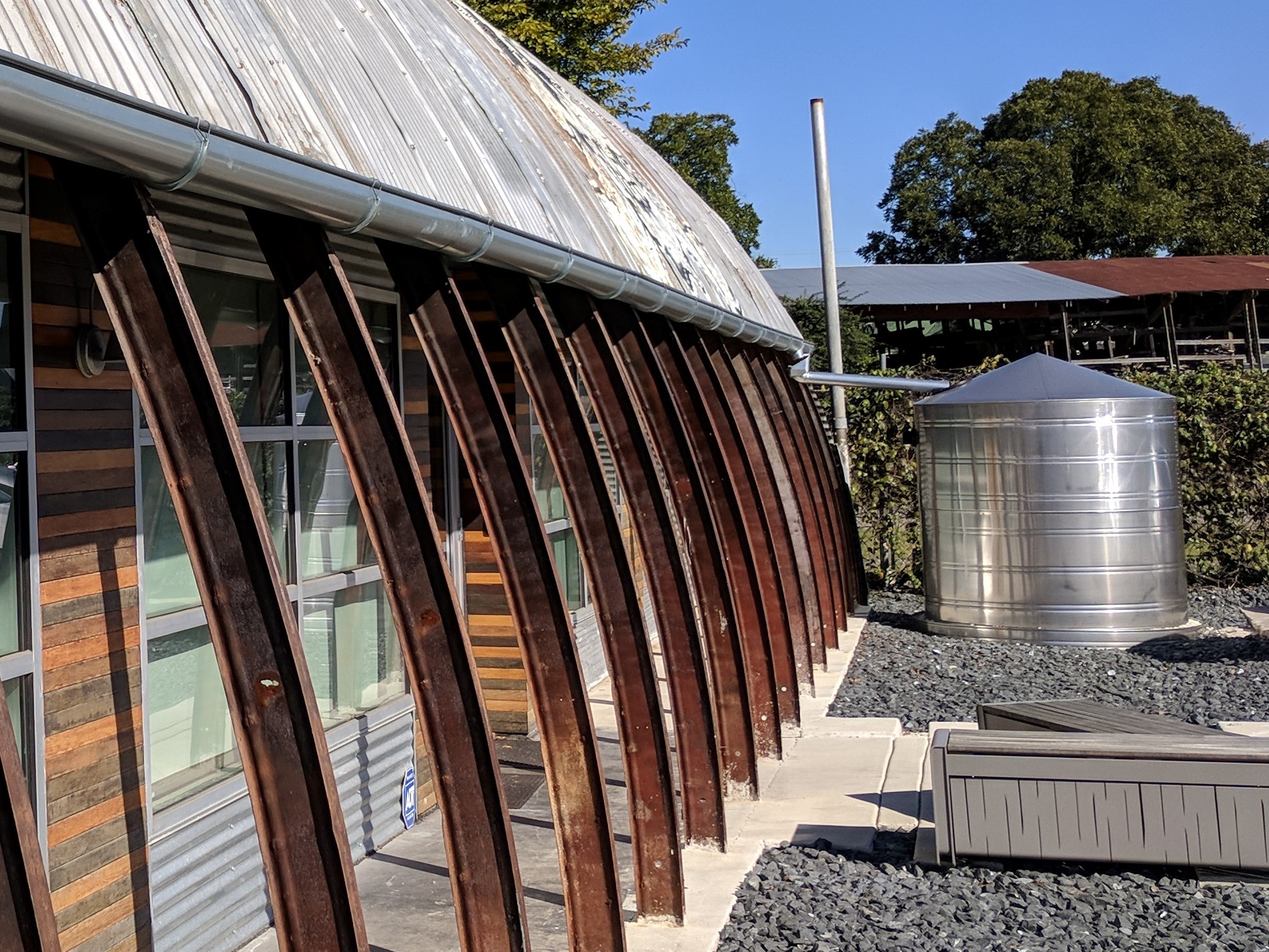
Rain Barrels and Cisterns
Stormwater
Rain barrels and cisterns harvest rainwater primarily from rooftops for reuse. Rain barrels are placed at roof downspouts, and cisterns store rainwater in larger volumes in tanks for use in non-potable applications such as toilet flushing.
Occasional cleaning may be necessary to remove debris, such as leaves, coming off the rooftop. The barrel must also be sealed during warm months to avoid mosquito breeding, and should be drained prior to winter to prevent damage caused by freezing. Water should be drained between rainfall events (for irrigation) to maximize effectiveness.
Complete rain barrels can be purchased from a number of retailers, or they can be constructed relatively easily and economically. Instructions for creating your own rain barrel can be found at Maryland Environmental Design Program Website. (http://www.dnr.state.md.us/ed/rainbarrel.html) The main components of a rain barrel include tubing to connect the barrel to a downspout, a cover to prevent mosquitoes from entering, a faucet to allow regulated use of the captured water, and an overflow pipe to divert excess water once the barrel is filled. The basic components of a rain cistern are much the same as with rain barrels, but with a much larger storage tank that is buried underground. This means a pump must also be installed to bring water out of the cistern.
Low. Ready-made rain barrels range from $20 to $150. Homeowners can reduce costs by constructing their own.
Reduces flow volumes, thereby reducing demands on stormwater management systems. Provides free supply of water for non-potable uses, easing demands on potable drinking water sources. Provides homeowners and small businesses with water for irrigation